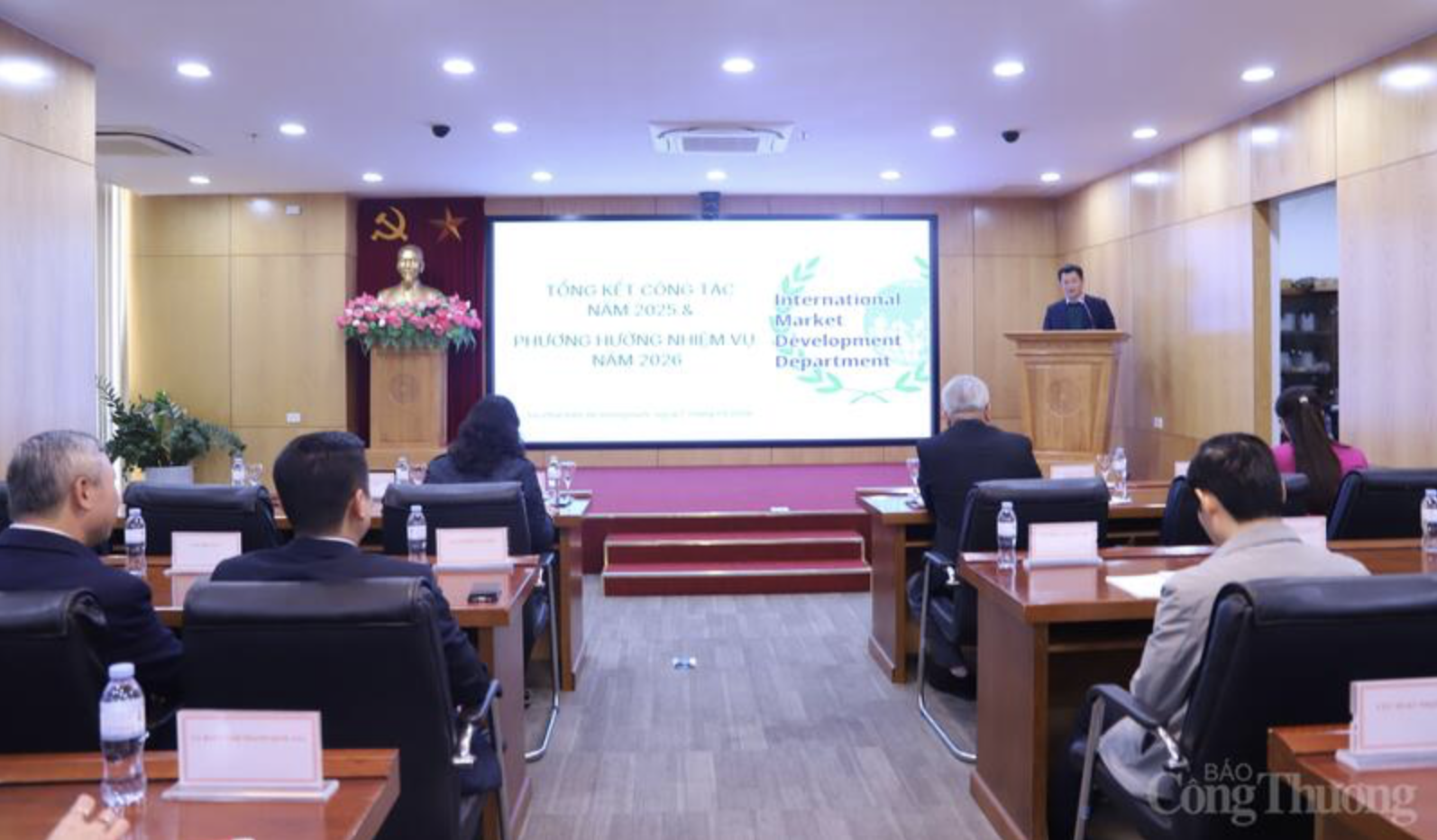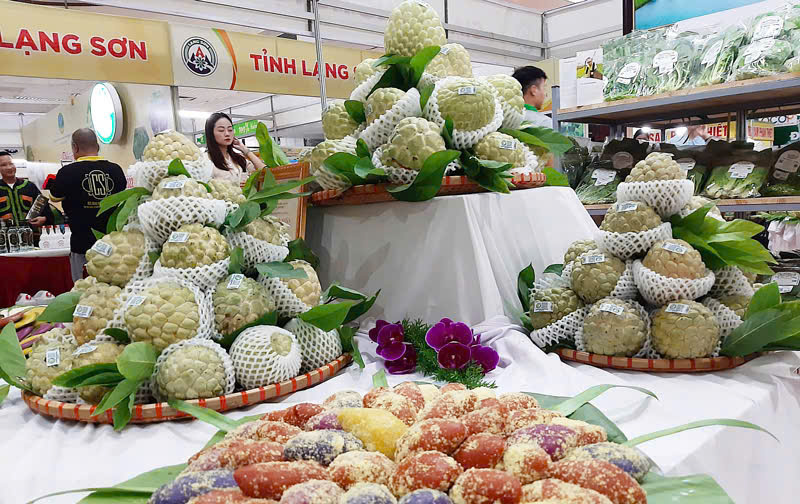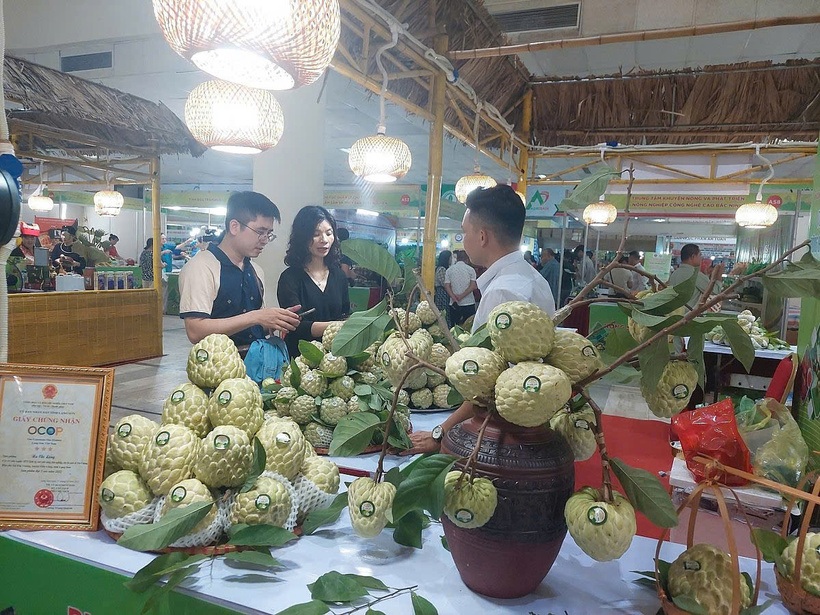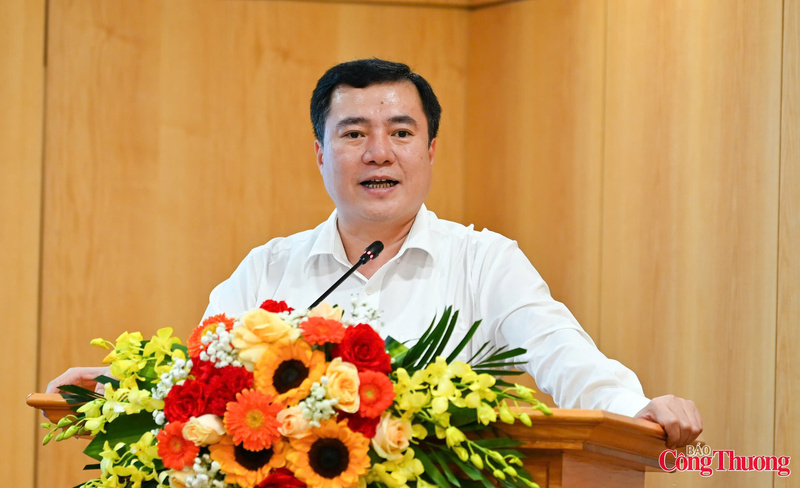
Foreign markets fuel growth, making a key contribution to GDP
19:05 | 23/03/2025 09:53 | 07/01/2026Trade
From production to market: The missing link

Bac Son seedless persimmons, Huu Lung bamboo shoots, Na Ri arrowroot vermicelli, and Van Lang herbal yeast wine boast diversity and potential, but markets remain limited
In Lang Son, a northern border province with a large ethnic minority population, bringing highland specialties to the market is no longer a production issue, but a sales challenge. From Bac Son seedless persimmons and Huu Lung forest bamboo shoots to Na Ri arrowroot vermicelli and Van Lang herbal yeast wine, the products are diverse and full of potential, yet markets remain narrower than expected.
The cause isn’t poor quality. Instead, highland products are still entangled in long-standing bottlenecks: limited distribution channels, weak value chain linkages, underdeveloped branding, and limited access to modern markets. Many cooperatives still struggle with basic requirements such as packaging, labeling, and traceability, essential steps for entering supermarkets or e-commerce platforms.
Although boosting product sales is a key pillar in the National Target Program for Socioeconomic Development in Ethnic Minority and Mountainous Areas, a cohesive and effective coordination mechanism has yet to be established. Many localities still treat trade promotion as one-off events rather than building a long-term ecosystem. Businesses are cautious about long-term partnerships due to unstable raw material supply, while local producers are unfamiliar with market-driven production that involves service, quality, and consumer trust.
The story of Ms. Vi Thi Lua, Director of Lua Vy Gotu Kola Tea Cooperative, illustrates the challenge. Despite her cooperative earning a 3-star OCOP (One Commune, One Product) rating, they initially had no product photography, no livestreaming skills, and no idea how to use TikTok Shop. “Without step-by-step guidance, we’d probably still be selling the old way, just hauling our goods to market,” she shared. Thanks to digital training, Lua Vy’s TikTok channel now has over 26,000 followers, contributing to 40 percent of the cooperative’s revenue.
However, many communes currently facing special difficulties still lack stable digital infrastructure. Numerous producer groups don’t have computers, don’t know how to use e-commerce platforms, and are unaware of how to measure the effectiveness of online sales channels. Without timely intervention, the risk is clear: the “digital market” will only serve those who already know how to use digital tools.
Breakthrough sales strategy

Under the National Target Program, the province introduced policies to boost local specialties, from trade promotion and OCOP sales points to commune-level e-commerce plans
In the first half of 2025, Lang Son Province demonstrated a strong commitment to building an appropriate mechanism for selling highland products. Under the National Target Program, the province rolled out a series of policies to promote local specialties, from trade promotion regulations and OCOP sales points to commune-level e-commerce development plans.
A major milestone was the installation of information technology (IT) equipment in 120 communes and villages, laying the groundwork for an online marketplace for ethnic minority and mountainous region products. This isn’t just a bridge to urban consumers. It’s an opportunity for highland producers to interact directly with the market, understand buyer needs, grasp how the market functions, and identify strengths and weaknesses in their own products.
Hundreds of local products are now available on platforms such as nongsan.langson.gov.vn, Sendo Farm, and TikTok Shop. Leading cooperatives such as Chi Lang (selling custard apples online), Lua Vy (gotu kola tea), and Van Quan Honey Cooperative are pioneering a new wave of direct-to-consumer sales, cutting out middlemen while reaching customers nationwide.
Alongside digital platforms, the province is also scaling up traditional trade promotion activities such as trade fairs, OCOP booths in major cities, and display zones for highland products at tourist destinations. The province’s perspective is clear: consumption isn’t just about sales, but about shaping long-term markets, linking products with tourism, culture, and local identity.
Notably, with a total 2025 program budget of over VND1.584 trillion, the province has supported 23 value chain production projects and 16 community-based projects, with “sustainable marketability” as a central criterion. These products are not only standardized in quality but are also assigned QR codes for traceability, branded, and segmented for specific customer groups, laying a foundation for future export.
Lang Son is also going beyond domestic markets with a project to promote farm produce sales through international border gates such as Huu Nghi, Chi Ma, and Dong Dang, targeting exports of highland farm products embedded with ethnic cultural narratives, aligning with Asian consumer tastes.
Promoting sales of products from ethnic minority and mountainous regions is not just about solving the “sales problem,” it’s about unlocking a sustainable development future in which local people own their products and their markets, a future where cultural identity is not diluted, but becomes a competitive advantage, a future where local specialties don’t just reach urban shelves, but also go global.
Lang Son is taking strong steps, but for this journey to inspire other regions, further support is needed, through flexible financial mechanisms, improved digital infrastructure, market-oriented training, and practical policy design. Only then will the “village market” and the “digital market” no longer be separate spheres, but integrated spaces, propelling highland specialties into the hearts of today’s consumers.
In the first half of 2025, Lang Son Province launched several foundational initiatives to boost sustanable sales of highland products. IT equipment was installed in 120 communes and villages, enabling the creation of “online markets” for ethnic producers. Simultaneously, 23 value chain production projects and 16 community-based projects were initiated to ensure the marketability of products from the start of the production cycle. Hundreds of local agricultural products are now listed on e-commerce platforms such as nongsan.langson.gov.vn, Sendo Farm, and TikTok Shop.
Among standout models is Lua Vy Gotu Kola Tea Cooperative, which now has over 26,000 followers on TikTok, generating over 40 percent of its revenue through digital channels. Lang Son Province has also issued a provincial e-commerce development plan through 2025, aiming for each highland commune to have at least one product actively promoted and sold online. With over VND1.584 trillion allocated for the National Target Program in 2025, the province has made clear its priority: enhancing the marketability and building a market ecosystem for ethnic minority and mountainous region products.

19:05 | 23/03/2025 09:53 | 07/01/2026Trade

19:05 | 23/03/2025 09:52 | 07/01/2026Economy

19:05 | 23/03/2025 15:21 | 06/01/2026Trade

19:05 | 23/03/2025 15:16 | 06/01/2026Industry

19:05 | 23/03/2025 13:13 | 06/01/2026Trade